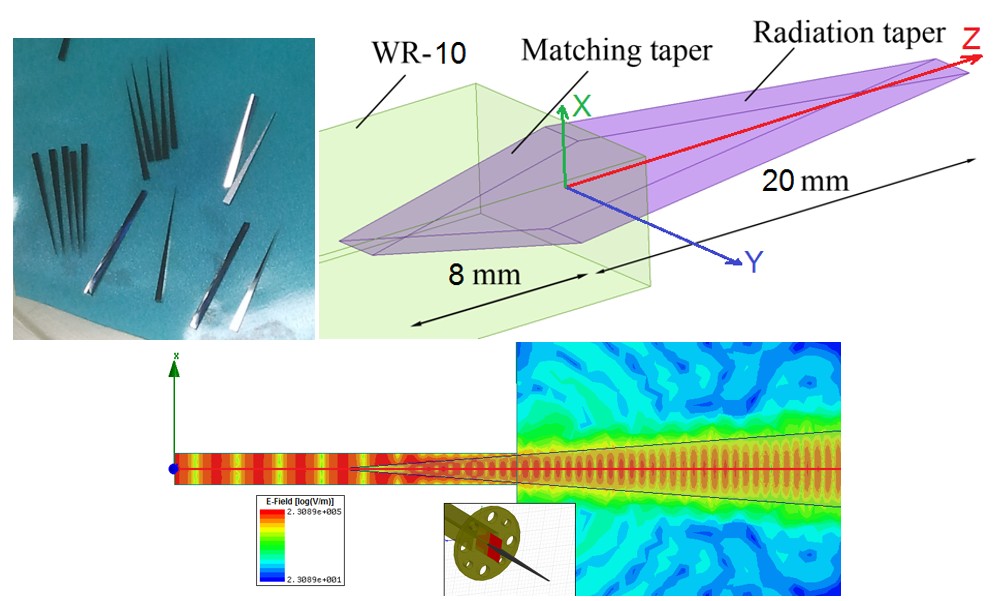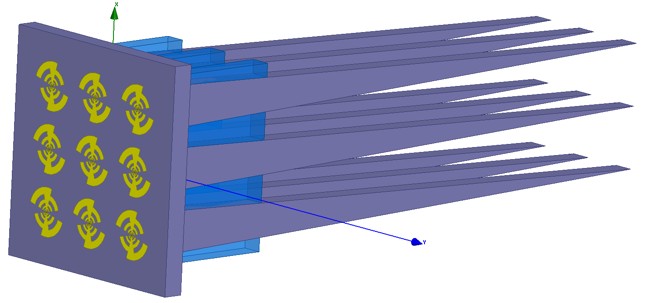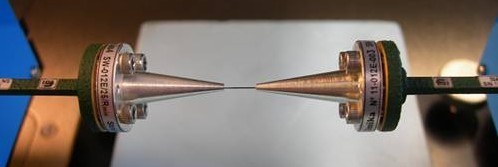Dielectric Rod Waveguide Components
Dielectric rod waveguide (DRW) is a novel platform for future THz electronics. DRW can be combined with semiconductor devices (oscillators, detectors, mixers, etc.) in the hybrid and/or monolithic integrated circuits. Considerable achievements in this area have been obtained in RAD. These developments offer a new opportunity for passive and active component performance, as it allows to decrease significantly the insertion losses as well as reduce manufacturing costs. Besides, DRWs have no cut-off frequency, thus enabling broad band operation.
Figure 1. Dielectric rod waveguide antenna operating at 75 – 1100 GHz.
The output power of semiconductor photomixers is typically only a few microwatts at 1 THz. The efficiency can be greatly increased by using a stack of n-i-pn-i-p superlattice photomixers with extremely small size where ballistic conductivity can be employed. Combining photomixers with DRW antennas can be used for a future THz power source.

Figure 2. DRW based antenna array with photomixers.
Outstanding plasticity properties of graphene and CNT networks give advantages compared to the typical MEMS, e.g. lower actuating voltages, better reliability, repeatability, and cost efficiency in manufacturing. Simplicity of CNT deposition technique gives an opportunity to cover a large area, that is important for creating large antenna reflector surfaces, sensor matrices, or large values of capacitance. Millimeter wave phase shifter can be developed by introducing a CNT varactor to the DRW. CNT components can be integrated into the DRW antenna array for THz beam steering applications.

Figure 3. CNT MEMS varactor .
Contact person: Dmitri Lioubtchenko



